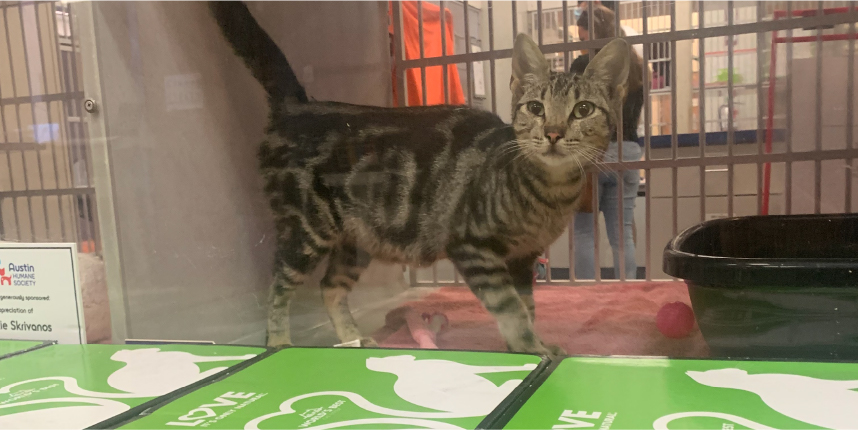Traveling with Your Cat? 6 Tips Before Hitting the Road
If you’re planning on traveling with a cat sometime soon, here are a few tips to make the experience a little more enjoyable for both of you!

How to Make a Disaster Plan for Your Cat
Wondering what to do should you and your cat experience a disaster like a hurricane, a house fire or heaven forbid, a tornado? You might have a plan, but what about your furry friend? You need a disaster plan for your cat.
Creating a disaster plan for your cat is no different than the one you’d make for yourself. And it’s really simple too. You’ll want to build a list of all the things you’ll need to ensure your cat is OK during any disruption in their normal living situation.
But before you start making a list of all the things you’ll need to plan for, be sure to take care of a few housekeeping items to ensure you’re in a good place — should disaster strike.
How to Prepare Your Cat In Case of a Disaster

The first thing you’ll want to do is make sure your cat has an ID tag with his or her most up to date information. While some cat owners prefer a more permanent solution like microchipping, a simple ID tag will do just fine.
The next thing you’ll want to start doing is to begin to train your cat to spend time in a crate. While this may seem like over preparation, there’s nothing worse than rushing to get your cat out of a situation and finding out they are not big fans of being in crates. Ouch. You can gradually train them by using treats.
And lastly, it’s good practice to always remove your cat from potentially harmful situations. So, when the clouds start to pile up, perhaps you bring them indoors. When the weather gets truly terrible, cats can easily become disoriented and wander away.
HOW TO BUILD A DISASTER PLAN FOR YOU CAT
As mentioned earlier, there are a handful of things you’ll want to focus on when putting your cat’s disaster plan together. Such as:
WHERE WILL THEY STAY?
Hopefully, whatever ends up happening won’t mean you have to leave your home, but just in case you do, it’s a good idea to consider all of your options.
While your first choice would obviously to bring your cat with you wherever you go, that may not always be possible. In this case, the American Society for the Prevention of Cruelty to Animals (ASPCA) recommends doing the following if you can’t bring your cat with you:
- Contact your veterinarian for a list of preferred boarding kennels and facilities.
- Ask your local animal shelter if they provide emergency shelter or foster care for pets.
- Identify hotels or motels outside of your immediate area that accepts pets.
- Ask friends and relatives outside your immediate area if they would be willing to take in your pet.
And if you don’t already have one, invest in a comfortable crate that your cat doesn’t mind spending some time in just in case you have to hit the road. This could, after all, prove to be their safe place during times of uncertainty.
WHAT TO FEED THEM?

Food and water can at times be hard to come by during a disaster, so it’s not a bad idea to have an extra jug of water and maybe some extra kibble or wet food laying around in case you have to unexpectedly scoot out the door.
In fact, the ASPCA recommends having 7 days’ worth of bottled water and 3-7 days’ worth of canned food with pop tops or a big bag of dry food.
You’ll also want to pick up some back up bowls — stainless steel is recommended — to put their food and water in, a can opener, and of course some paper towels.
Feeding your pet during a disaster and making sure they have plenty of water is crucial. So is ensuring they have a handful of simple supplies.
WHAT SUPPLIES WILL YOU NEED?
If you already have a crate, and enough food and water, there’s only a few other things you’ll need. This includes:
- Disposable litter trays
- Litter
- Litter scooper
- Dish soap and disinfectant (cleaning & bathing)
- Disposable garbage bags for clean-up
- Extra collar, harness, and leash
- Flashlight
- Blanket
- Toys
And lastly, you’ll want to make sure you have some medication and first aid items just in case.
WHAT SHOULD BE IN YOUR FIRST AID KIT FOR YOUR CAT
Here are some basic items to include in your Cat First Aid Kit as recommended by the ASPCA:
- Absorbent gauze pads
- Adhesive tape
- Cotton balls or swabs
- Ice pack
- Disposable gloves
- Scissors with blunt end
- Tweezers
- OTC antibiotic ointment
- Oral syringe or turkey baster
- Towels
- Alcohol wipes
- Styptic powder
- Saline eye solution
- Artificial tear gel
- Phone number, clinic name, address of your veterinarian as well as local veterinary emergency clinics.
So now that you have your list of supplies and a plan in place on where to go and how to keep your cat safe, you’re good to go should something unexpected occur.
For more advice on how to keep your cat happy and healthy, visit out our Cat Care Tips section of our website.




